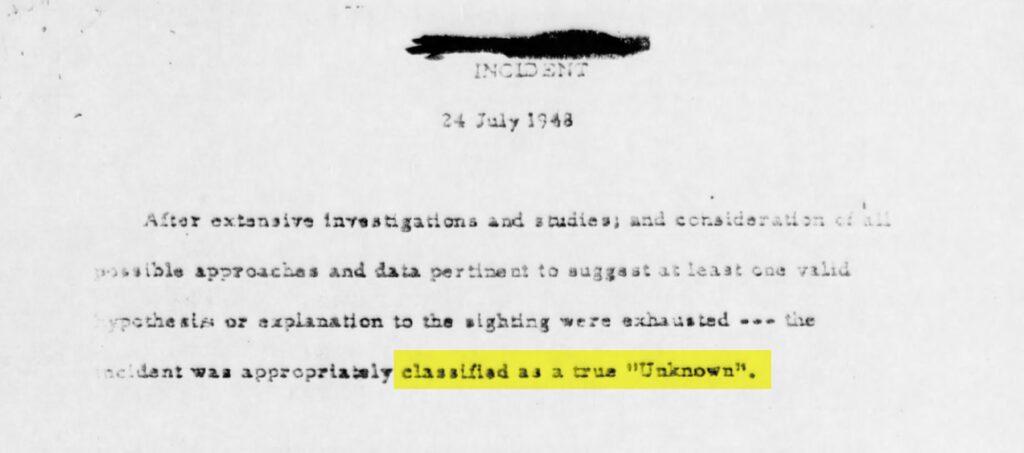On July 24, 1948, an event occurred that would not only change the lives of two experienced airline pilots but also play a critical role in shaping the unfolding UFO phenomena in the United States. The Chiles-Whitted UFO encounter, near Montgomery, Alabama, remains one of the most significant and controversial UFO sightings in history. After extensive investigation by Project Blue Book, the U.S. Air Force’s long-running official inquiry into unidentified flying objects, the incident was labeled as unexplained. It was later argued many years later the object was a meteor, however, many remain unconvinced to this day.
The Encounter
The witnesses to this event were two experienced commercial pilots, Clarence S. Chiles and John B. Whitted. On that fateful night, they were piloting an Eastern Airlines Douglas DC-3 passenger plane from Houston to Atlanta. At approximately 2:45 a.m., while cruising at about 5,000 feet near Montgomery, Alabama, they reported seeing a bright light in the distance.
As the light drew closer, it became clear to the pilots that this was not an ordinary aircraft. They described it as a cigar- or torpedo-shaped object, about 100 feet long, with no wings, and emitting a bright light from its underside. The object was said to have a double row of windows through which bright lights glowed, and it left a trail of fire in its wake.
Both Chiles and Whitted claimed the object shot past their DC-3 at high speed before climbing into the clouds with a tremendous burst of flame. The encounter lasted a mere 10 to 15 seconds, but it left a lasting impression on both men. They later sketched similar pictures of the object, providing some of the earliest and most detailed eyewitness accounts of what would become known as a “UFO.”
Investigation
The U.S. Air Force initiated an investigation into this sighting under Project Sign, the predecessor to Project Blue Book. The official Project Blue Book documentation regarding the incident includes the following:
“Both pilots stated under interrogation that the object was definitely a mechanical device of some type. An exhaust trail 50 times the length of the object was seen as the object pulled up into a cloud bank to the ESE. No sound was heard, no odors detected, and the object was not picked up by radar.”
While early Project Sign investigators were intrigued by the pilots’ claims and considered the possibility that they had seen an extraterrestrial spacecraft, the final assessment of Project Blue Book concluded that Chiles and Whitted had misidentified a meteor.
However, this explanation has been met with criticism. Skeptics point out that the pilots’ description of the object’s maneuvers, specifically the abrupt change in direction, does not align with the known behavior of meteors. In addition, the detailed descriptions of the object’s structure and lighting suggest an engineered, mechanical craft rather than a natural phenomenon.
Significance and Legacy
The Chiles-Whitted UFO Encounter stands out as one of the most significant UFO sightings for several reasons. First, the witnesses were experienced pilots, lending credibility to their report. Secondly, their sighting was one of the first to describe a UFO as a structured, mechanical craft, which has since become a common characteristic in many UFO reports.
Moreover, this case played a significant role in shaping official and public attitudes towards UFOs in the U.S. The incident helped prompt the U.S. Air Force to launch Project Blue Book, which ran from 1952 to 1969 and collected, categorized, and analyzed over 12,000 UFO sightings.
The official files for the case are below. It is noted that due to the age, some are not readable, however it is recommended to continue through the PDF file as many more are not as bad as some of the initial pages.
